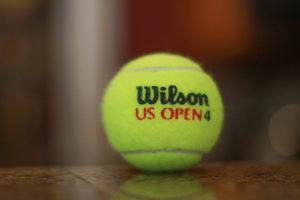Focus, Attitude and Effort are things I emphasize over and over again with my athletes and clients. There is a lot in this world we don’t control, but we can control our focus, attitude and effort.
I like to use a camera to explain the ways we can control our focus, braking it down into three types.
Big Focus (high aperture)
Small Focus (low aperture)
No focus (out of focus)
This amazing photo by my client Russell Wells is taken at a high aperture, so you can see everything in focus.

You can view Russ’s incredible photography and buy a beautiful print at his website GC Photography
This tennis ball photo is taken at a very low aperture (1.4). This is what we call small focus and it makes everything but the focused item blurry. In fact, at this low aperture you can see that even the back edges of the ball are out of focus.

This blurry out of focus photo is of my dog sleeping in her bed. Honestly, it is.

I have a group of second grade boys and they easily grasped this concept of big focus, small focus and no focus.
Examples of having big focus
• When you get off the chairlift. You take in everything around you and make sure you are safe and looking to see if anyone is heading your direction.
• When you first walk into a room. Who is in there? What is everyone doing?
• When something in life is difficult and it would be easy to just focus on that one thing. Taking a step back and seeing the big picture and all the things that can give you hope, joy, peace and perseverance.
• When you need to size up a new situation.
Examples of having small focus
• When you are about to hit a ball. Seeing only the ball and seeing it as clearly and early as possible.
• When you are targeting a shot.
• When you are taking a test.
• When you are having an important conversation with someone.
Examples of no focus
• When you are trying to fall asleep.
• When you need a moment of downtime and to clear your head.
• To allow yourself to be creative.
• When you need to regroup and so you are just breathing and letting your mind wonder.


Join the conversation